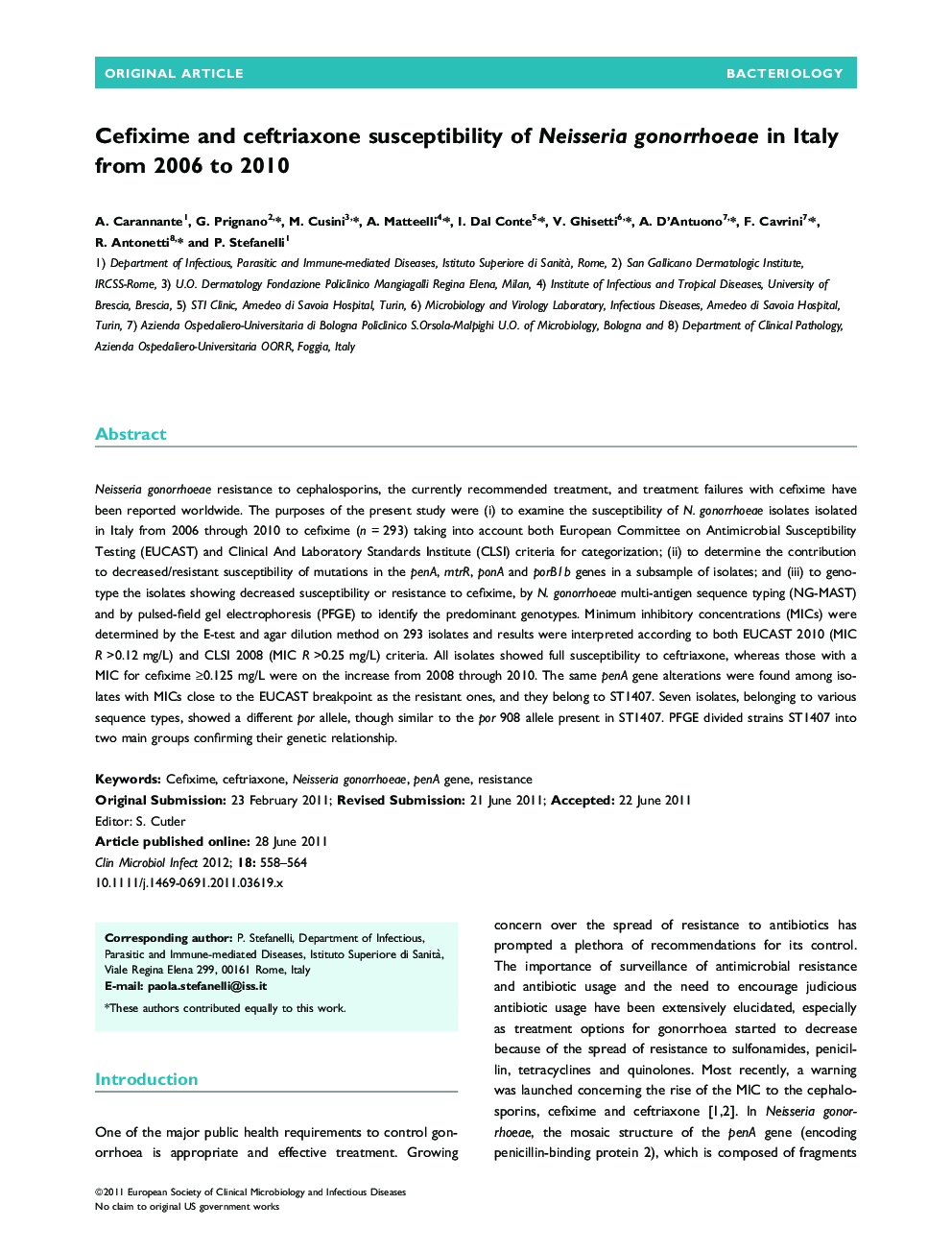| Article ID | Journal | Published Year | Pages | File Type |
|---|---|---|---|---|
| 6130956 | Clinical Microbiology and Infection | 2012 | 7 Pages |
Abstract
Neisseria gonorrhoeae resistance to cephalosporins, the currently recommended treatment, and treatment failures with cefixime have been reported worldwide. The purposes of the present study were (i) to examine the susceptibility of N. gonorrhoeae isolates isolated in Italy from 2006 through 2010 to cefixime (n = 293) taking into account both European Committee on Antimicrobial Susceptibility Testing (EUCAST) and Clinical And Laboratory Standards Institute (CLSI) criteria for categorization; (ii) to determine the contribution to decreased/resistant susceptibility of mutations in the penA, mtrR, ponA and porB1b genes in a subsample of isolates; and (iii) to genotype the isolates showing decreased susceptibility or resistance to cefixime, by N. gonorrhoeae multi-antigen sequence typing (NG-MAST) and by pulsed-field gel electrophoresis (PFGE) to identify the predominant genotypes. Minimum inhibitory concentrations (MICs) were determined by the E-test and agar dilution method on 293 isolates and results were interpreted according to both EUCAST 2010 (MIC R >0.12 mg/L) and CLSI 2008 (MIC R >0.25 mg/L) criteria. All isolates showed full susceptibility to ceftriaxone, whereas those with a MIC for cefixime â¥0.125 mg/L were on the increase from 2008 through 2010. The same penA gene alterations were found among isolates with MICs close to the EUCAST breakpoint as the resistant ones, and they belong to ST1407. Seven isolates, belonging to various sequence types, showed a different por allele, though similar to the por 908 allele present in ST1407. PFGE divided strains ST1407 into two main groups confirming their genetic relationship.
Related Topics
Life Sciences
Immunology and Microbiology
Microbiology
Authors
A. Carannante, G. Prignano, M. Cusini, A. Matteelli, I. Dal Conte, V. Ghisetti, A. D'Antuono, F. Cavrini, R. Antonetti, P. Stefanelli,
